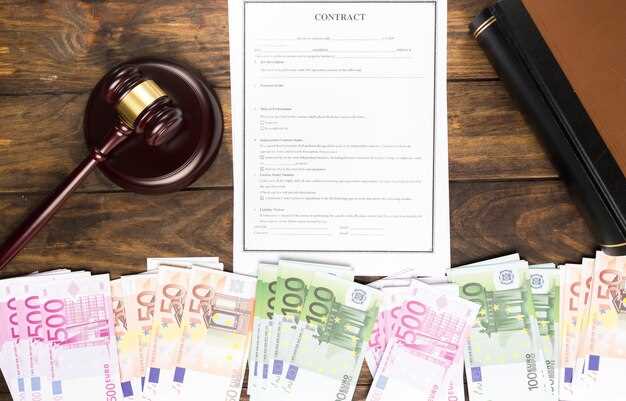
The process of importing foreign license plates can be a straightforward yet complex procedure, depending on the regulations of the destination country. Understanding these regulations is essential for ensuring compliance and avoiding legal complications. Many vehicle enthusiasts and collectors seek to display international plates as a way to showcase their passion for global automotive culture.
In this article, we will delve into the various steps involved in legally importing foreign license plates. We will cover the necessary documentation, potential fees, and the specific legal requirements that differ from one jurisdiction to another. Additionally, we will highlight potential pitfalls and common misconceptions that can arise during the importation process.
By the end of this article, readers will gain a comprehensive understanding of how to navigate the system efficiently and effectively. Whether you are a collector, a business professional, or simply curious about international vehicle registration, this guide aims to provide clear and actionable insights into the world of foreign license plate importation.
Understanding the Legal Requirements for Importing Foreign License Plates
Importing foreign license plates involves a series of legal steps and requirements that must be adhered to in order to ensure compliance with local laws. The process typically varies by country, but some common requirements can be outlined to guide individuals and businesses through this procedure.
First and foremost, it is essential to check the regulations set forth by the local authorities regarding the importation of foreign license plates. Many countries have stipulations that limit the types of plates that can be imported, particularly for safety or identification purposes. Always consult the relevant government department or agency responsible for vehicle registration to obtain up-to-date information.
Another critical component is the documentation. Importers usually need to provide proof of ownership of the vehicle associated with the license plates. This may include the original purchase invoice, registration documents from the foreign country, and any export documentation available. Additionally, be prepared to present identification and potentially other forms of verification as required by local authorities.
In many cases, duty fees or import taxes may apply. Understanding customs regulations will be crucial to determine the costs associated with your import. Be aware that failure to pay these fees can result in penalties or confiscation of the plates.
Furthermore, if the plates are to be used on a vehicle that will be driven on public roads, they must meet the safety and compatibility standards laid out by your country. This means ensuring that the plates are in compliance with sizing, visibility, and material requirements. Some jurisdictions may even require a vehicle inspection to verify the plates’ legality before they can be registered.
Finally, after importation, be prepared to go through the local vehicle registration process. This typically involves submitting all previously mentioned documentation to register the foreign license plates with the local motor vehicle department. Depending on the jurisdiction, you may be issued a new set of registration plates or be allowed to keep the imported ones.
In summary, navigating the legal requirements for importing foreign license plates necessitates a thorough understanding of local laws, proper documentation, customs obligations, and vehicle registration procedures. Compliance with these steps will ensure a smooth importation process.
Step-by-Step Process for Applying for and Receiving Foreign License Plates

Obtaining foreign license plates requires careful adherence to regulations and procedures specific to the country from which you are importing. Here is a detailed guide to successfully navigate this process.
Step 1: Research Regulations
Start by researching the specific licensing regulations in both your home country and the country of origin. Pay attention to rules regarding eligibility, duration of stay, and any taxes or fees that may apply.
Step 2: Gather Necessary Documentation
Collect all essential documents that may include:
- Proof of identity (passport or national ID)
- Vehicle registration documents
- Proof of residency or temporary residency
- Insurance documentation
- Purchase agreement or invoice for the vehicle
Step 3: Contact Relevant Authorities
Reach out to the appropriate authorities in your country who handle vehicle registration. This may involve visiting a local DMV or equivalent office. Inquire about the specific forms and additional requirements needed for importing foreign license plates.
Step 4: Complete Application Forms
Fill out the required application forms accurately. Provide all requested information, including vehicle details and personal information. Ensure to include any identification numbers or reference codes needed.
Step 5: Pay Required Fees
Be prepared to pay any applicable fees during the application process. This may include registration fees, import taxes, or licensing fees. Retain all receipts for your records.
Step 6: Submit Your Application
Once your application is complete, submit it to the relevant authority. Keep a copy of your application and any submitted documents for your records. Check if you can submit your application online or if you must do it in person.
Step 7: Await Processing
Be patient as your application undergoes processing. This duration can vary. In some cases, you may receive a tracking number to monitor your application status.
Step 8: Receive License Plates
Upon approval, you will receive your foreign license plates along with any registration paperwork. Inspect the plates for accuracy and ensure all information aligns with your vehicle’s details.
Step 9: Mount Plates on Vehicle
Finally, securely attach your new foreign license plates to your vehicle as per local regulations. Ensure they are visible and comply with the guidelines outlined by the relevant authorities.
Following these steps diligently will facilitate a smooth process for obtaining foreign license plates legally.
Common Challenges and How to Overcome Them When Importing License Plates

Importing foreign license plates can be a straightforward process, but it often comes with various challenges. Understanding these hurdles and knowing how to navigate them is crucial for a successful import. Below are some common challenges and effective strategies to overcome them.
1. Legal Requirements
Each country has specific regulations regarding the importation of license plates. Not complying with these laws can lead to fines or confiscation of the plates. It’s essential to research the laws in both the exporting and importing countries.
Solution: Start by consulting the official customs website or local authorities for the latest regulations regarding license plate imports. Documentation such as invoices, export permits, or ownership proof may be required, so prepare these in advance.
2. Shipping and Handling Issues
License plates can be fragile, leading to potential damage during shipping. Additionally, shipping costs and timelines can vary significantly depending on the carrier and method used.
Solution: Choose a reputable shipping company that specializes in international shipping and offers insurance for fragile items. Always opt for secure packaging to protect the plates during transit.
3. Language Barriers
Communicating with sellers or shipping companies that speak different languages can lead to misunderstandings and errors in the import process.
Solution: Employ a translation service or use translation tools for essential communications. Clear language will help avoid confusion and ensure that all parties are on the same page.
4. Customs Delays
Customs procedures can be time-consuming, leading to unexpected delays in receiving your license plates. Missing documentation often contributes to these hold-ups.
Solution: Stay informed about the customs process and prepare all required documents beforehand. Keeping track of your shipment and maintaining open communication with customs can also help expedite the process.
5. Cultural Differences
Approaching sellers from different cultural backgrounds may result in differing expectations and negotiation styles, potentially hindering negotiations.
Solution: Educate yourself on the cultural norms of the seller’s country. Being respectful and adapting your approach can facilitate smoother transactions.
In conclusion, being proactive and understanding these common obstacles can greatly streamline the process of importing foreign license plates. With adequate research, strategic planning, and effective communication, you can successfully navigate the challenges that arise during this endeavor.
